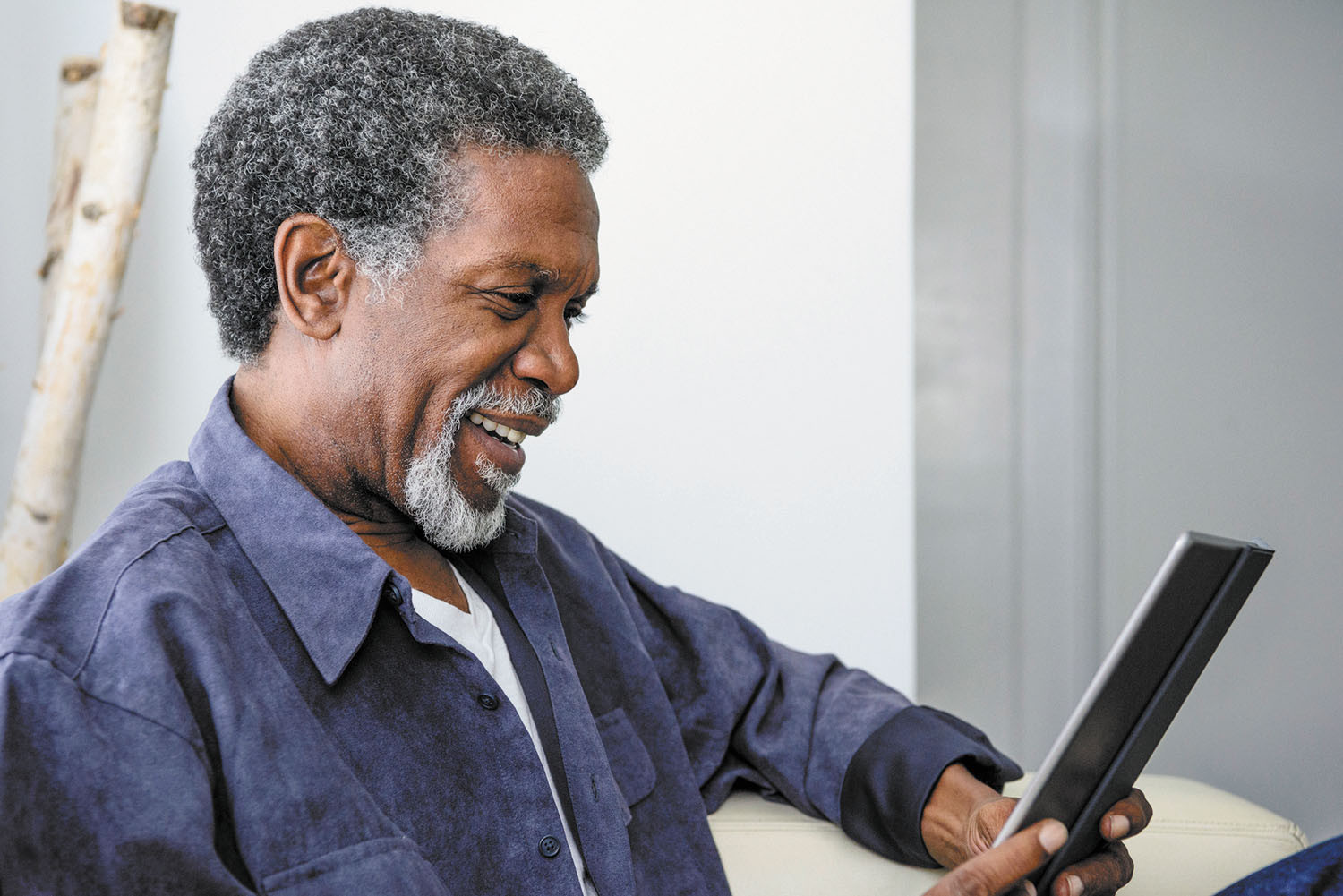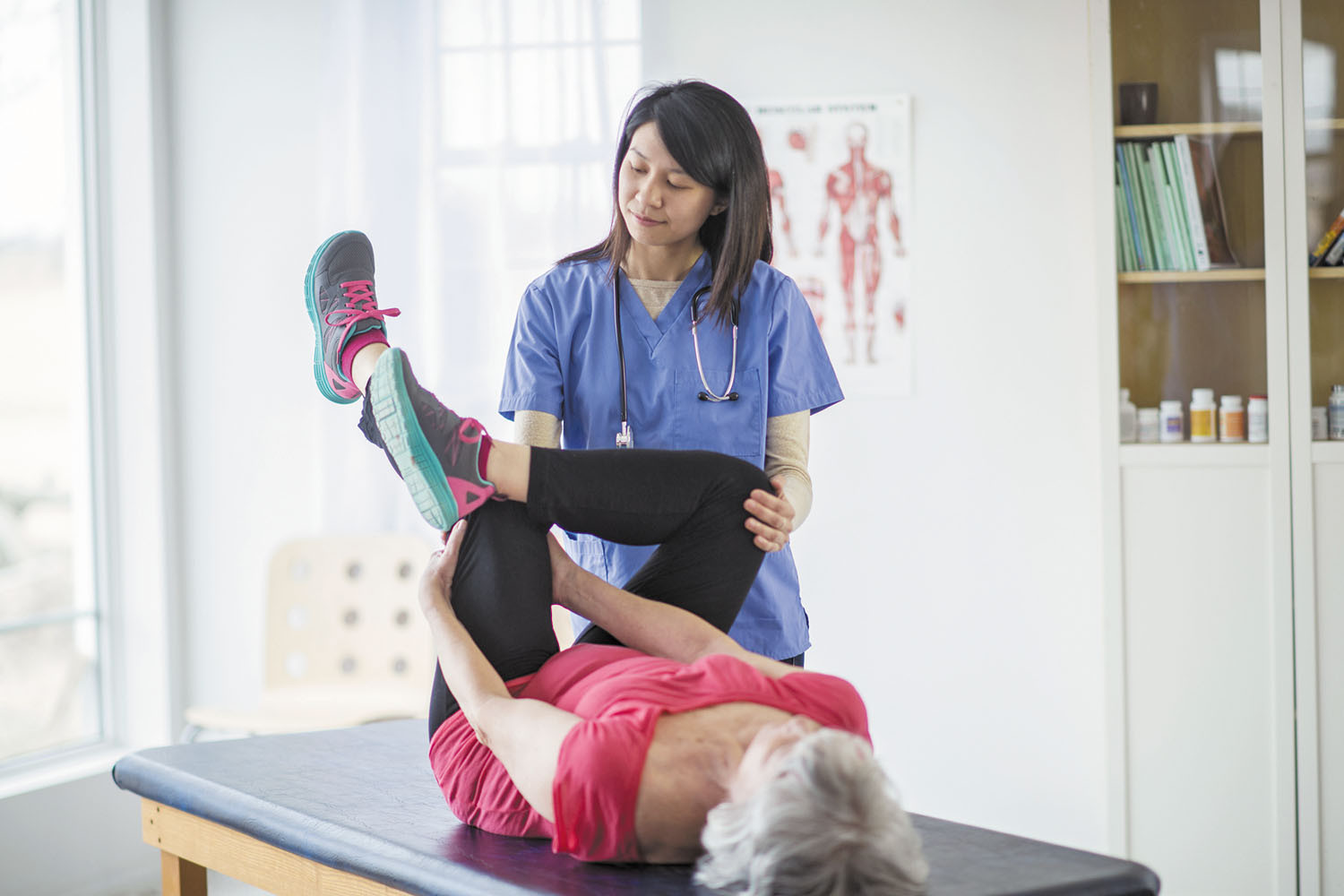
Nutritional yeast: Does this savory, vegan seasoning pack a nutritional punch?

Salmonella is sneaky: Watch out

Two jobs may lower the odds of dying from Alzheimer's disease — but why?

Mastitis: What to do when your breasts are painfully inflamed

How — and why — to fit more fiber and fermented food into your meals

UTI in older women: Why postmenopausal women are susceptible to urinary tract infection, and what to do about it

Can a routine vaccine prevent dementia?

Some adults may need a measles booster shot. Who should get one and why?

Less butter, more plant oils, longer life?

Healthier planet, healthier people
Staying Healthy Archive
Articles
The surprising side effects from using technology
Repetitive motion and poor posture can lead to aches and pains.
Image: © Johnny Greig/Getty Images
You've mastered the art of texting, emailing, and web surfing on your smartphone and computer. But along with that digital prowess, you've picked up an unexpected side effect.
"We get a number of patients who develop injuries from these activities," says Dr. Tamara Rozental, an orthopedic surgeon who specializes in hand, wrist, and elbow disorders at Harvard-affiliated Beth Israel Deaconess Medical Center.
Can this DNA test help predict your longevity?
Telomeres — made of your DNA — are biomarkers of aging.
Image: © Dr_Microbe/Getty Images
There's no crystal ball in medicine that can predict how fast you're aging or how long you'll live. But the latest trend in private screening tests claims to provide a tantalizing clue. The tests offer a snapshot of the length of your telomeres — the protective caps at the ends of chromosomes in your cells.
"The concept is very attractive. There's this visual idea of something acting like a clock counting down to the end, and that's why it's powerful. The problem is that just because it's appealing it doesn't mean it's true," says Dr. William Hahn, a Harvard Medical School professor and chief research strategy officer at Harvard-affiliated Dana-Farber Cancer Institute.
New guidelines extend your window for a first-line stroke treatment
News briefs
The American Stroke Association has made a major change to its recommendations for a first-line stroke therapy. The group's new guidelines, published online Jan. 24, 2018, by Stroke, say that instead of having just six hours from the onset of stroke symptoms to reach into a blood vessel, grab the clot, and pull it out, doctors now have up to 24 hours to perform the procedure (depending on the circumstances). The new recommendation will be helpful for people who suffer a stroke while sleeping and therefore don't know at what time the symptoms began. A thrombectomy may be combined with the other first-line treatment for stroke caused by a blood clot: a clot-busting drug called tissue plasminogen activator, or tPA. The treatment window to use tPA is just three to four hours, so it's imperative that you call 911 at the first sign of stroke symptoms. Those include the sudden onset of confusion, difficulty talking, weakness or numbness on one side of the body, or difficulty walking.
How does my health compare with President Trump’s?
On call
Image: © donskarpo/Getty Images
Q. I am about the same age as President Trump, and I also had a recent physical. My LDL (bad) cholesterol reading was 136, which my doctor thought was too high. But Mr. Trump's doctor said his LDL cholesterol of 143 was "excellent." Which is it?
A. The report of President Trump's health status brought out many armchair cardiologists — and real cardiologists — to comment on his cholesterol levels and risk for heart disease. The White House doctor's report stated that the president's "heart health" (not his cholesterol) was deemed excellent based on a normal exercise test and heart ultrasound. However, his LDL level of 143 was felt to be too high, and his doctor recommended doubling the president's statin medication. While the president doesn't show evidence of current heart disease, what is his future risk? A 71-year-old man with his cholesterol value would have a 10-year risk of heart attack, stroke, or cardiac death of 16% (about a one-in-six chance).
Want better exercise results in less time? Try interval training to boost your workout
Alternating between high- and low-intensity exercise may spur faster fitness gains.
Image: © SelectStock/Getty Images
Spend less time exercising and burn more calories: sounds too good to be true, right? But it may just be possible with interval training, a type of workout that uses short bursts of strenuous activity to ramp up your heart rate and boost your fitness.
Long popular with high-performance athletes, interval training — a workout that alternates between high-intensity and low-intensity activity — isn't just reserved for those seeking gold medals. "If done properly, it can be safe for the vast majority of people," says Dr. Meagan Wasfy, an instructor in medicine at Harvard Medical School and a cardiologist at Massachusetts General Hospital.
Do I get a better workout by running outdoors or on the treadmill?
Ask the doctors
Q. I often run on a treadmill rather than running outdoors, to avoid bad weather and save time. But am I getting a lower-quality workout?
A. Die-hard runners sometimes swear by outdoor runs, claiming that the treadmill can't come close to an outdoor workout featuring wind, hills, and uneven terrain, which they say makes outdoor runs more challenging. But that doesn't mean you can't get the same quality of workout on a treadmill indoors. If you run slower on the road and faster on the treadmill, or if you put the treadmill on an incline, you may be able to burn as many calories indoors as out. One study in the Journal of Sports Sciences found that putting the treadmill on a 1% incline could erase the differences in resistance between indoor and outdoor running. This put the two workouts on an equal footing — so to speak.
Smart joint strategies for keeping you moving well
Understanding risk and modifying your activities can cushion your joints from damage.
Image: © FatCamera/Getty Images
Joints are a little bit like couch cushions. Over time, the padding between your bones, called cartilage, gets worn out and flattens down — a condition known as osteoarthritis. Unfortunately, dealing with worn joints is not as simple as fixing or replacing a couch. And whether your joints wear out may not be entirely in your control.
"Unfortunately, a lot of your risk depends on your genes," says Dr. Scott Martin, an orthopedic surgeon and associate professor of orthopedic surgery at Harvard Medical School. "If you have a history of arthritis in your family, you may get arthritis in your lifetime. That's one factor you can't control." Dr. Martin is the faculty editor for the Harvard Special Health Report Knees and Hips (www.health.harvard.edu/knees).
Over-the-counter cautions
You can head off problems from nonprescription drugs by following instructions carefully and communicating with your doctor.
Image: © Bill Oxford/Getty Images
Relief for your symptoms can be as close as the nearest drugstore. Over-the-counter medicines and supplements can offer quick results, whether you've got heartburn, a headache, or a stuffy nose. And many people assume these products are safe, simply because they don't need to visit the doctor to get them. Unfortunately, that's not always the case.
Any medication that works cannot be completely safe, says Dr. Gordon Schiff, associate professor of medicine at Harvard Medical School and associate director of Brigham and Women's Center for Patient Safety Research and Practice. The decision to make a drug available over the counter is often more a matter of marketing than safety, he says.
Stand more, burn (slightly) more calories
Research we're watching
Image: © Squaredpixels/Getty Images
As many people have suspected, a new study confirms that standing more can help you burn more calories. But the number of calories it burns in the course of the day isn't even enough to work off a fun-size candy bar.
The results of a Mayo Clinic study, published online January 31 by the European Journal of Preventive Cardiology, found that adults who weighed 143 pounds, the average weight in the study, burned 0.15 more calories per minute while they stood than when they sat. So, in a six-hour day of standing instead of sitting, they would burn some 54 extra calories.
Skipping breakfast linked with higher levels of arterial plaque
Research we're watching
A study published October 2017 in the Journal of the American College of Cardiology found that people who regularly skip breakfast may have more arterial plaque than those who don't. Researchers used ultrasound to scan the arteries of more than 4,000 adults in Spain who were categorized into three groups: those who ate a heavy breakfast, those who ate a light breakfast, and those who ate no breakfast at all. They found that nearly 75% of those who regularly skipped breakfast had signs of plaque buildup in their arteries, compared with only 57% of people who reported eating a big breakfast every day and 64% who ate a small meal in the morning.
It's not clear why this was the case, although the authors noted that the people in the study who skipped breakfast were more likely to be obese and to have high cholesterol, high blood pressure, or diabetes. However, even when the researchers adjusted for those factors, the differences in arterial plaque levels between the groups persist.

Nutritional yeast: Does this savory, vegan seasoning pack a nutritional punch?

Salmonella is sneaky: Watch out

Two jobs may lower the odds of dying from Alzheimer's disease — but why?

Mastitis: What to do when your breasts are painfully inflamed

How — and why — to fit more fiber and fermented food into your meals

UTI in older women: Why postmenopausal women are susceptible to urinary tract infection, and what to do about it

Can a routine vaccine prevent dementia?

Some adults may need a measles booster shot. Who should get one and why?

Less butter, more plant oils, longer life?

Healthier planet, healthier people
Free Healthbeat Signup
Get the latest in health news delivered to your inbox!
Sign Up









